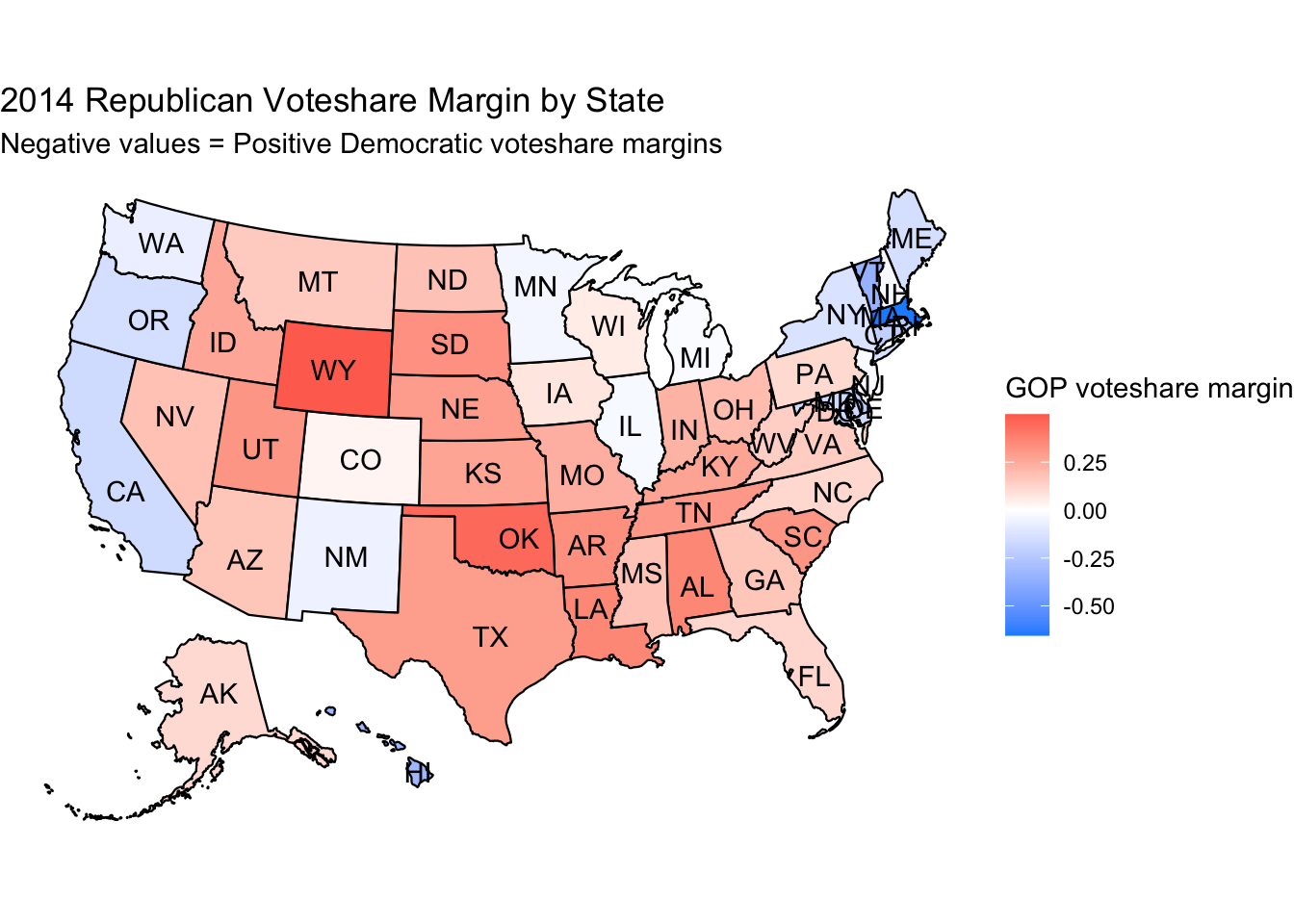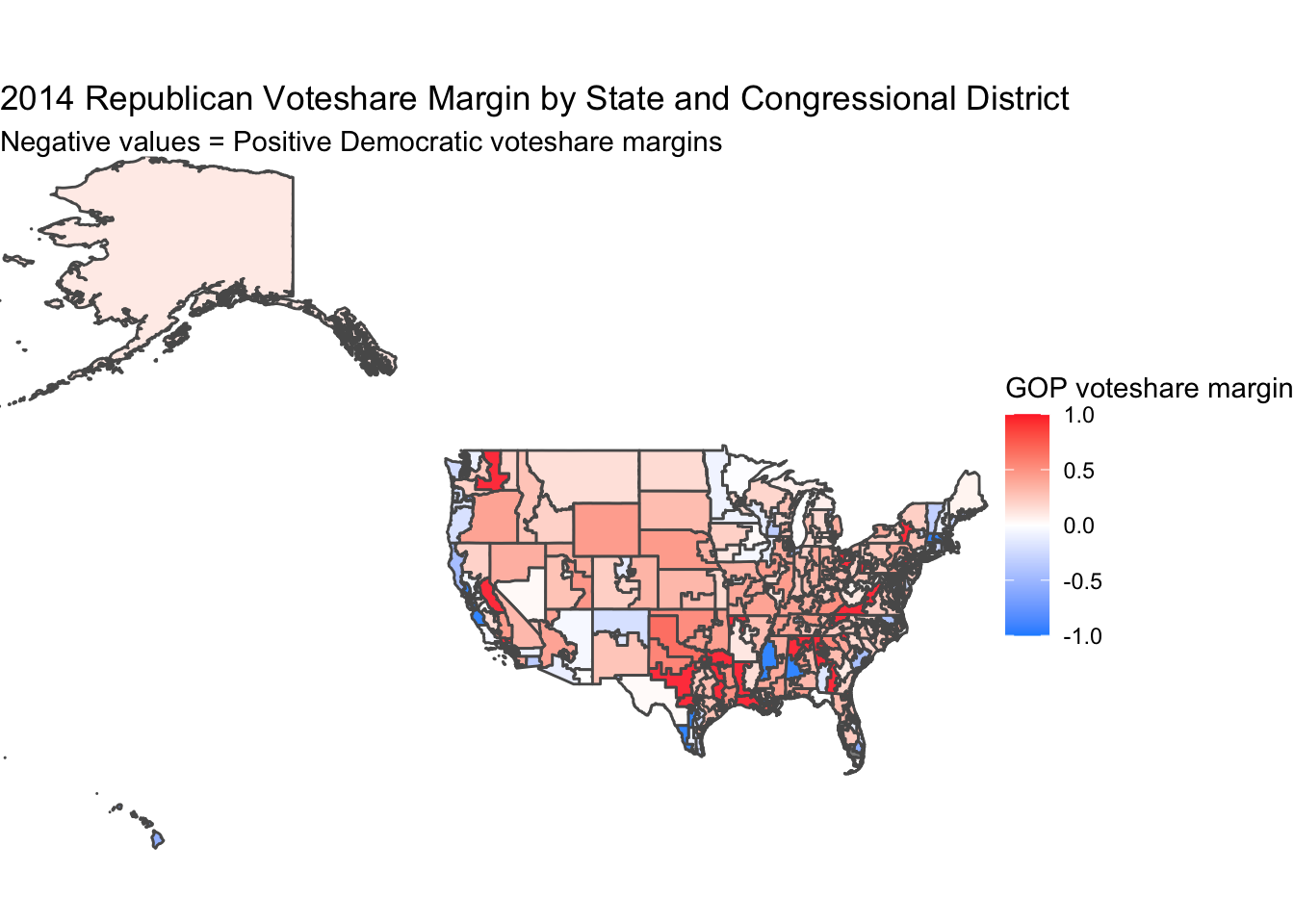on
Blog Post 1 - Introduction
This blog is part of a series for Gov 1347: Election Analytics, a course at Harvard University taught by Professor Ryan D. Enos.
Welcome to the very first post in my election blog series! My name is Giovanni Salcedo, and I am a senior studying Government on the Data Science track. For my first post, I aim to provide some background on how midterms usually look like for the party in power, which should help provide context for my predictions for the 2022 midterms. In particular, how do Democrats fare in midterm elections when they are the incumbent party? To address this question, I will analyze the 2010 and 2014 midterm elections during Democratic President Barack Obama’s two terms in office. I predict that Democrats will tend to do poorly in midterm elections when they are the incumbent party in the Oval Office.
In the 2008 presidential election, Obama decisively defeated his Republican opponent John McCain, winning 365 electoral votes and 52.9% of the national popular vote. The Democrats’ great performance carried over to the congressional elections the same night, where they increased their Senate majority by 8 seats to 57 seats total and House majority by 21 seats to 257 seats total. All in all, Obama would start his first term with strong majorities in both chambers of Congress.

In contrast, Obama’s first midterm election in 2010 was anything but a good night for Democrats. Republicans won a substantial 63 seats in the House, retaking the majority with 242 seats total. Although the Democrats managed to defend their Senate majority, they lost 7 seats, leaving them with a slim majority of 51 seats. The map above shows the congressional voteshare margins of each party by state. Despite Obama’s victory in many swing states like Florida, North Carolina, and Ohio (and a surprise victory in Indiana!) just two years prior, Republicans had higher voteshare margins in all of them. Democrats maintained higher voteshare margins primarily in states that are usually safer for their party during presidential and many congressional elections like California, Massachusetts, and New York.
Despite a poor midterm performance for his party, Obama would go on to win reelection in 2012, winning 332 votes and 51.1% of the popular vote against Republican Mitt Romney, a margin smaller than his 2008 win but still arguably decisive. In this year, Democrats managed to win a net of 8 seats in the House, not enough to retake the chamber but still a decrease in Republicans’ majority. In the Senate, Democrats won a net of 2 seats, increasing their majority to 53 seats. Obama would serve another term, and his party would hold on to the Senate, but he still had to prepare for the 2014 midterms.


As the maps above show, Democrats once again performed poorly in the midterms in this year. Republicans expanded their majority by 13 seats in the House, and they swept the Senate, netting 9 seats and taking the majority with 54 seats. Compared to 2010, many states are not as red, suggesting that the GOP’s voteshare margins were not as big this year, which is reflected in their House performance. Democrats’ voteshare margins seem to be even more concentrated in their “safe” states, especially in New England states like Massachusetts.
Based on all these elections, I predict that Democrats will once again have an uphill battle in the upcoming 2022 midterms. In the 2020 election, Democrats managed to hold on to the House and win both the Senate and presidency, but as we have seen, Democrats tend to lose seats in both chambers during the midterms. This year could be somewhat different, as election forecasters like FiveThirtyEight currently predict the Senate and House to go in different directions, but regardless, I expect the Democrats to perform worse overall than they have during past presidential elections.